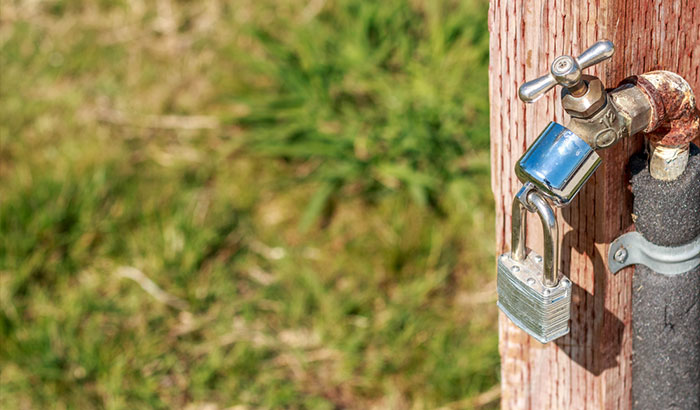Utah is facing extreme drought conditions, and that’s why this summer it’s more important than ever to begin drought-proofing your yard.
There are several ways to help prepare your property for those drier conditions. Consider these tips to keep your yard looking lush.
Mulch
Mulching your garden is one of the most effective strategies at drought-proofing your yard, and can give your garden the extra boost it needs to survive a drought. Mulch provides an extra layer of protection and helps to keep the soil cool and moist longer, protecting your plants’ roots. In addition, it also helps to suppress weed growth.
For the best results, apply mulch to your garden between 2 and 6 inches deep. If you are using mulch with smaller particles, you can use a bit less and go shallower. For mulch with larger pieces, use more and go deeper. Overall, it never hurts to use more than less when it comes to mulching.
Choose Drought-Friendly Plant Varieties
While water-loving plants such as irises and daylilies can be tempting, it is more practical to choose plants that can withstand the current hot, dry conditions. Here is a list of some flowers and other plants that thrive in Utah’s dry climate.
- Bougainvillea
- Portulaca
- Gaillardia
- Verbena
- Oleander
- Sage
- Poppy
- Sedum
- Desert Rose
- Lavender
- Red Valerian
- Yarrow
- Russian Sage
- Euphorbia
- Rose Campion
- Rock Daisy
For vegetable gardens, consider choosing plant varieties with smaller leaves. Large-leaved plants lose water quicker than smaller-leaved varieties. In addition, shallow-rooted greens, such as lettuce do not fare well in substantial drought. If you must have these plants, consider growing them in a pot and locating them in a cool, shady spot in your yard.
Take Advantage of Shaded Areas
If you have chosen plants that need shade to thrive, be sure to take advantage of the shaded regions of your yard. If you don’t have shaded areas or are already full, you can easily create artificial shade. One way to do this is by using shade cloth. The shade cloth can be used to cover rows of vegetables or other plants.
Another way to create shade is through the use of taller plants. Flowers such as sunflowers, coneflowers, and foxgloves are all great options to provide shade for shorter, shade-loving plants. In addition, the soil of shaded regions will retain water better, so you could plant flowers with more stringent water requirements in those areas as well.
Strategic Water Use
While mulch is excellent at retaining moisture, you may still need to water your plants if it hasn’t rained in a long time. Watering deeply and infrequently encourages deep root growth. Frequent and shallow waterings keep the roots near the surface, making them less resistant to hotter, drier conditions. However, if your plants are in the flowering or fruiting stage, be careful not to let them go too long without water, as that could kill the plant.
Work on Your Soil
A more complicated way to prepare your yard for drier conditions is by improving your soil. Soil that is close to that found in nature is the best kind for surviving droughts. Soil found organically comprises 50 percent clay, sand, and organic matter, and 25 percent each of air and water. Most garden soil consists of 75 percent clay, sand, and organic matter and only 25 percent combined with water. To help mimic more natural soils, consider aerating your garden’s soil. You can do this with a garden fork. Aeration will create more space in the soil to let in water and air, resulting in healthier soil.
Let Aeroscape Property Maintenance and Landscaping
At Aeroscape Property Maintenance and Landscaping, we have professional landscape contractors ready to help you with drought-proofing your yard in order to keep it looking green. Contact us today to get a free quote on your next landscaping project. We serve Salt Lake and Utah counties in the state of Utah.

